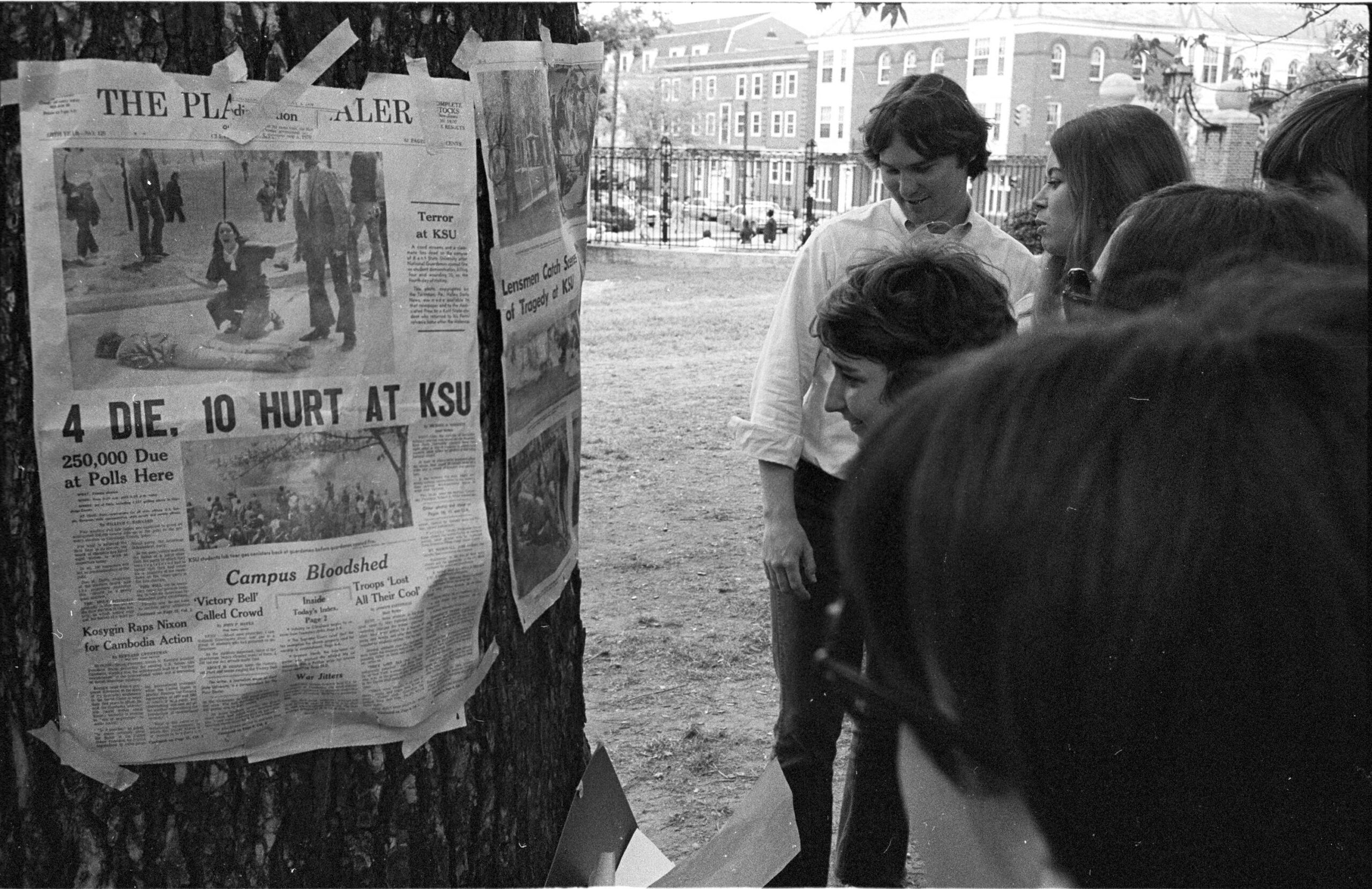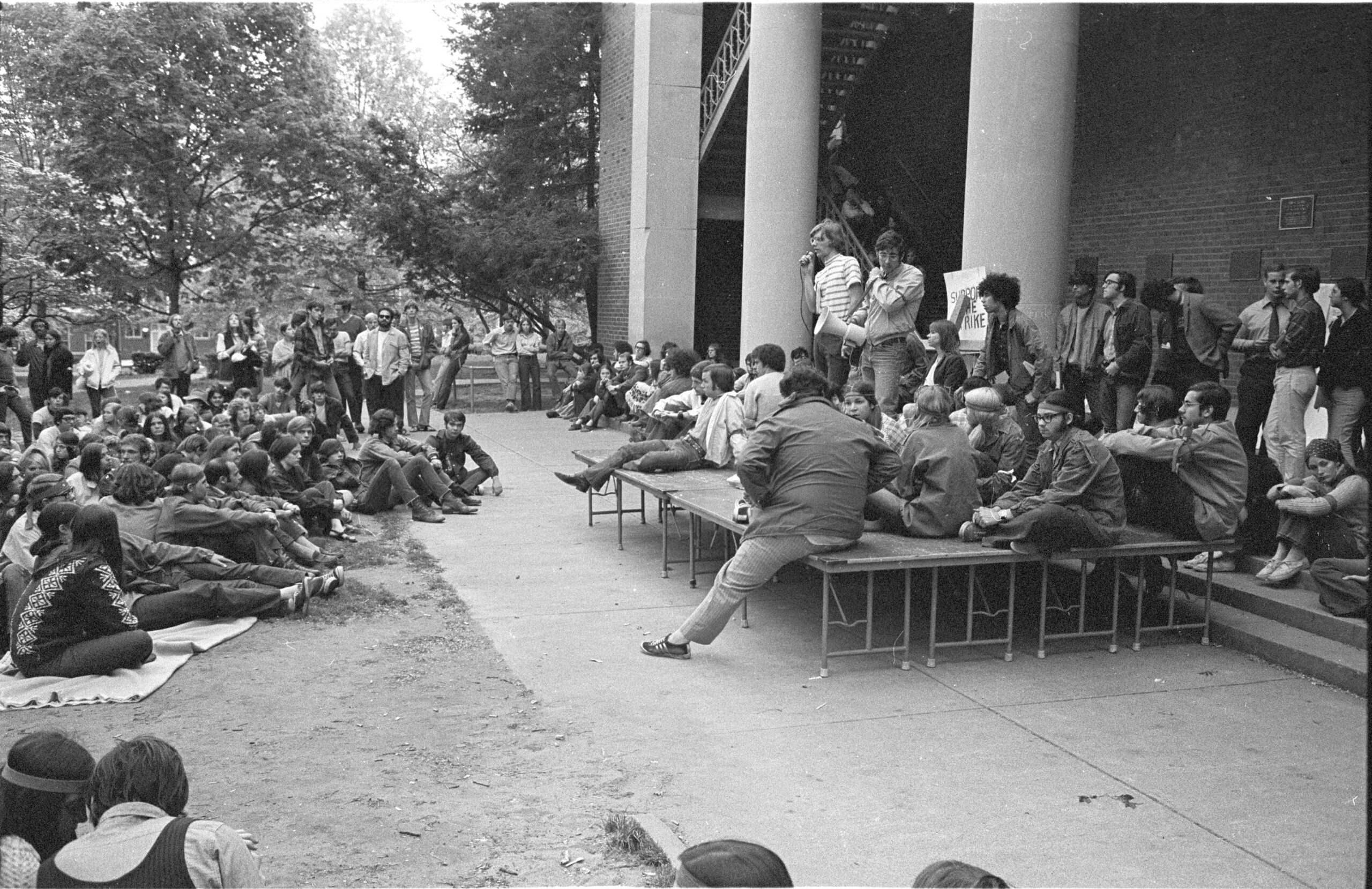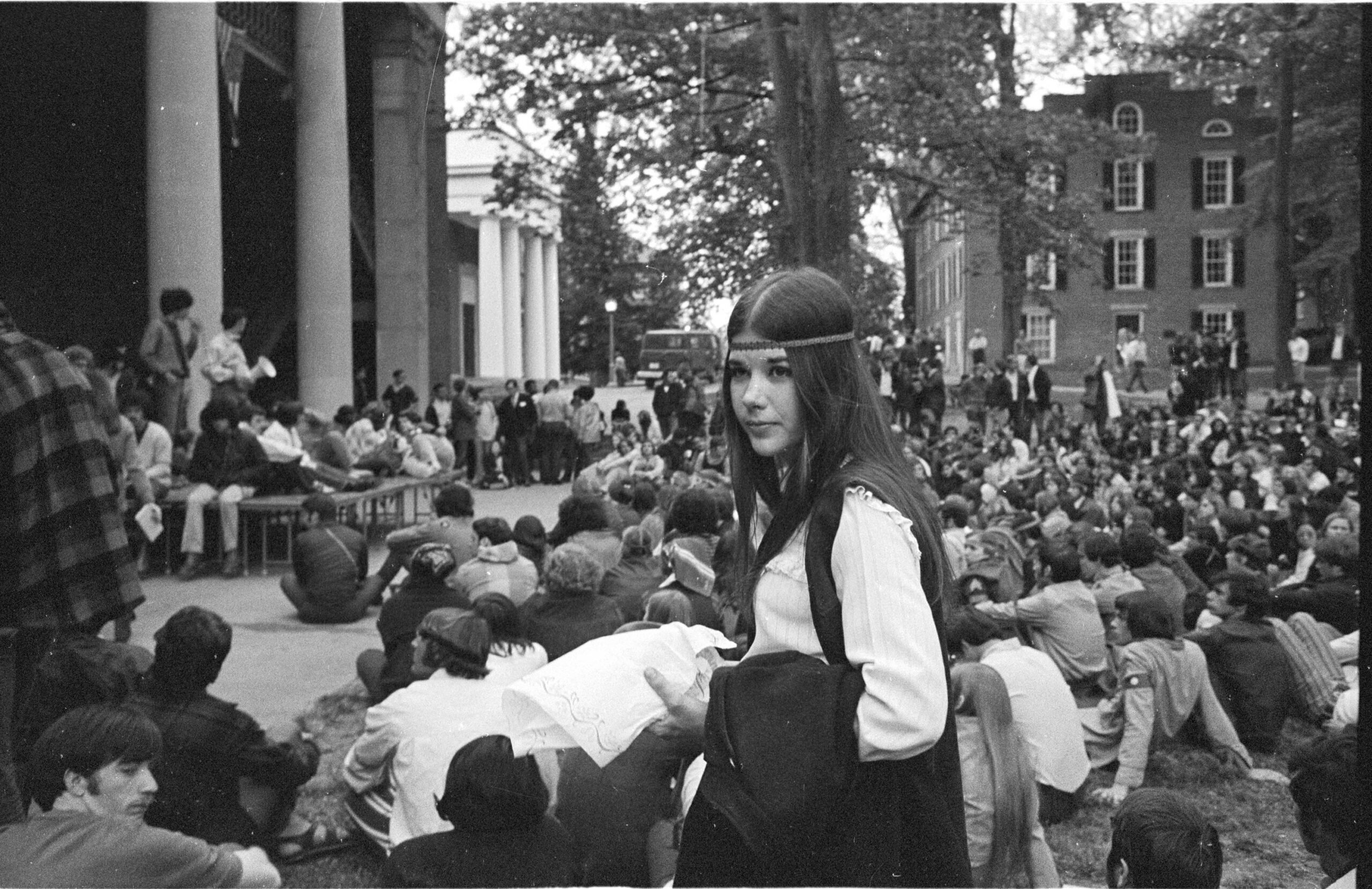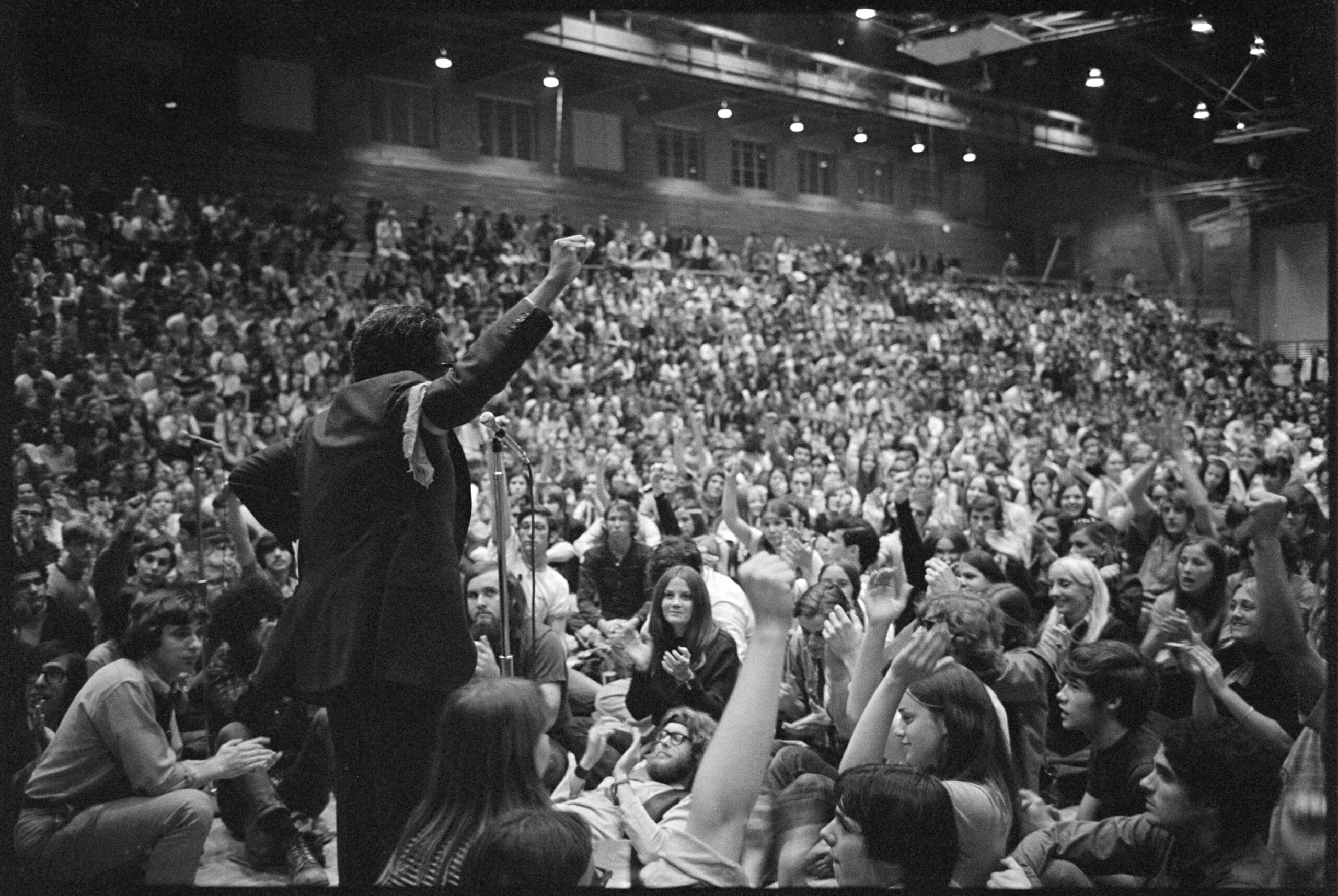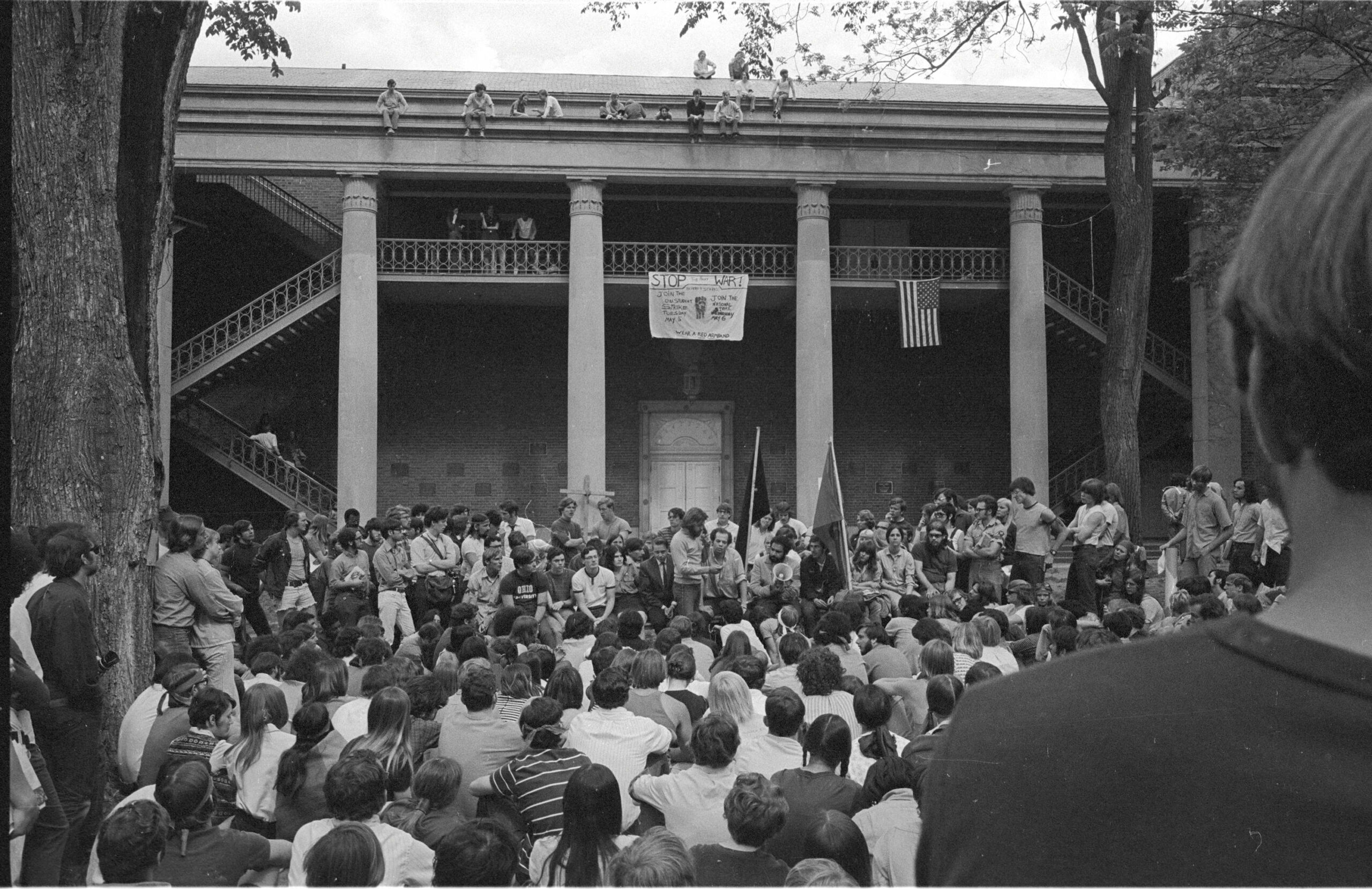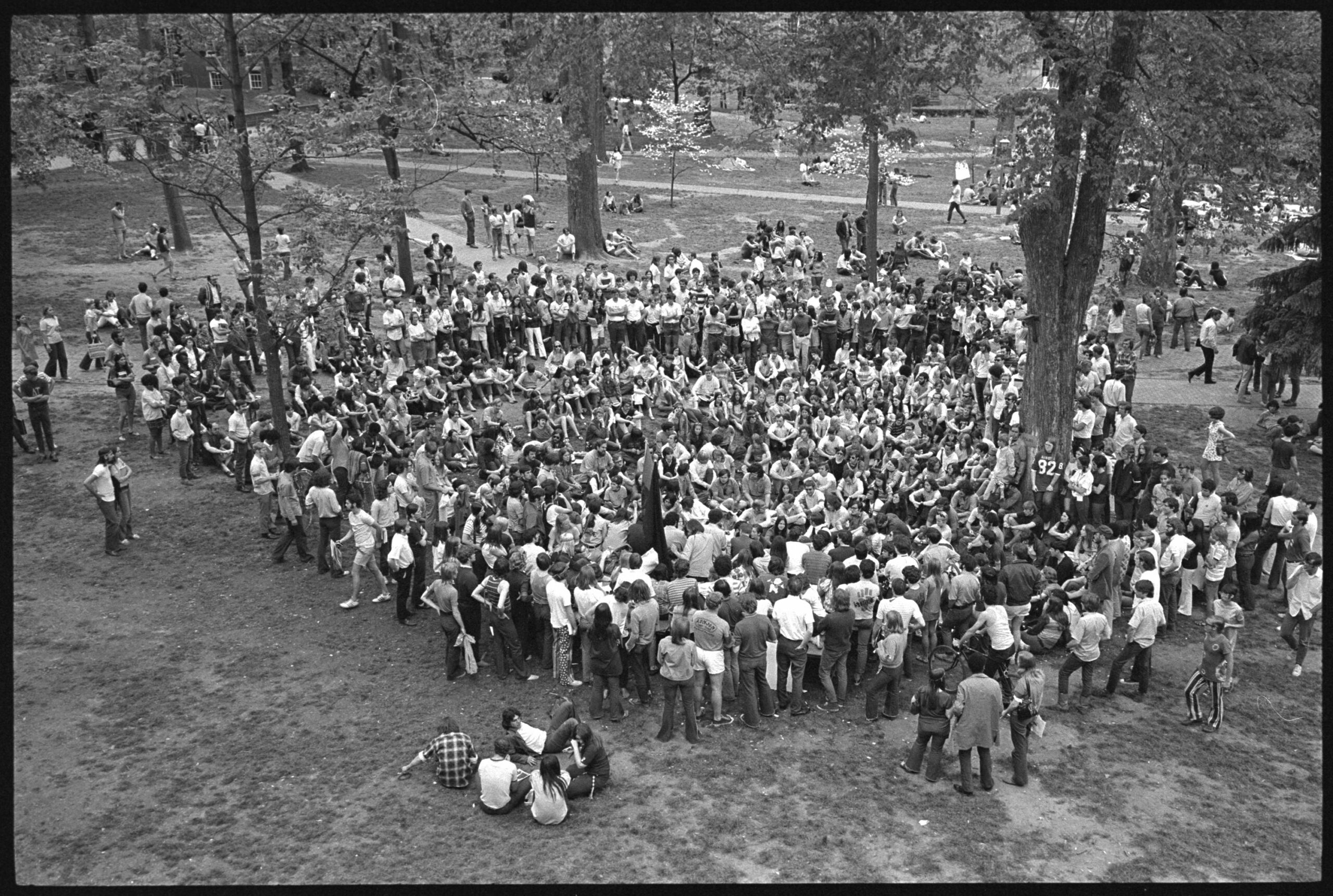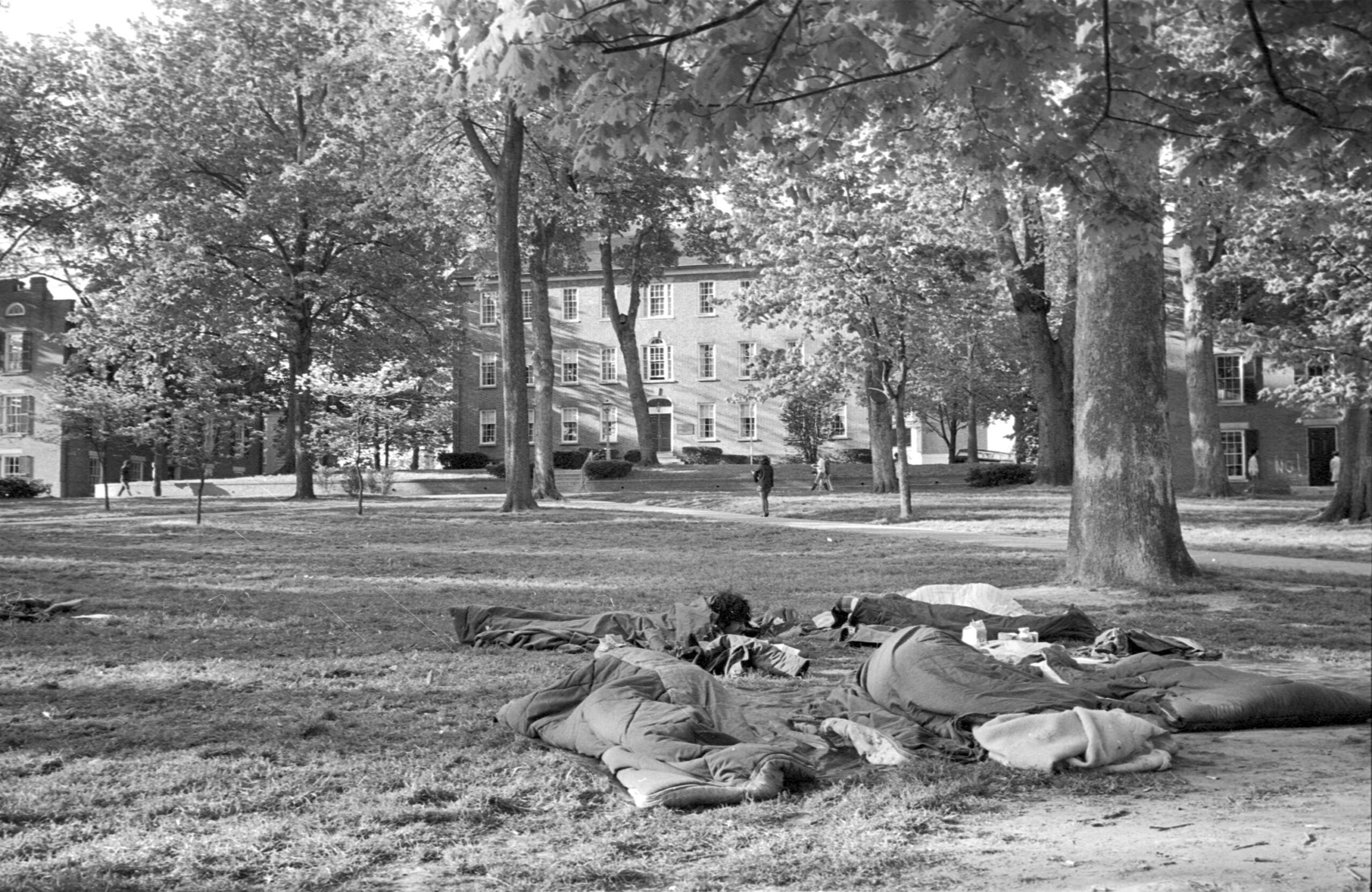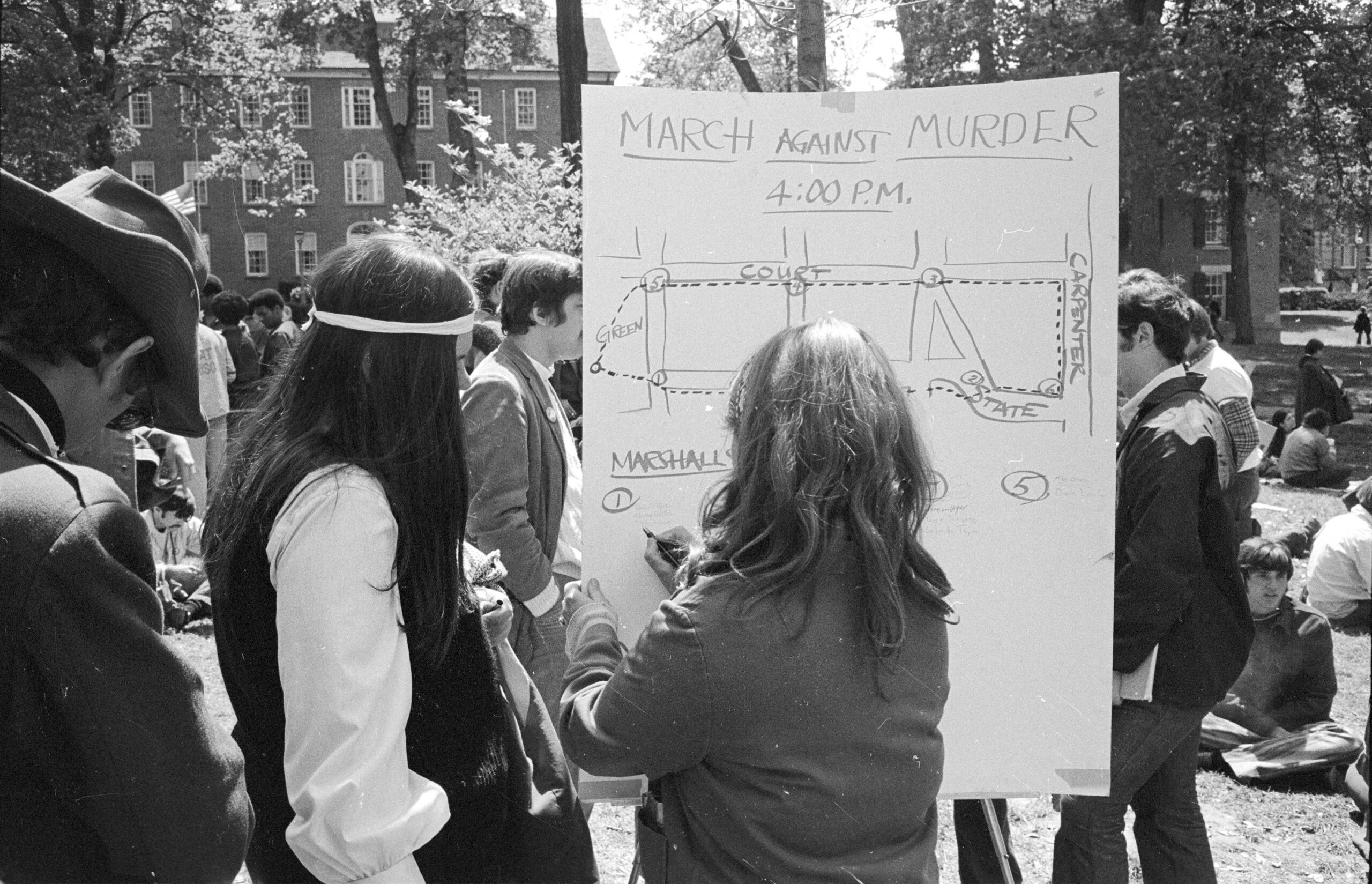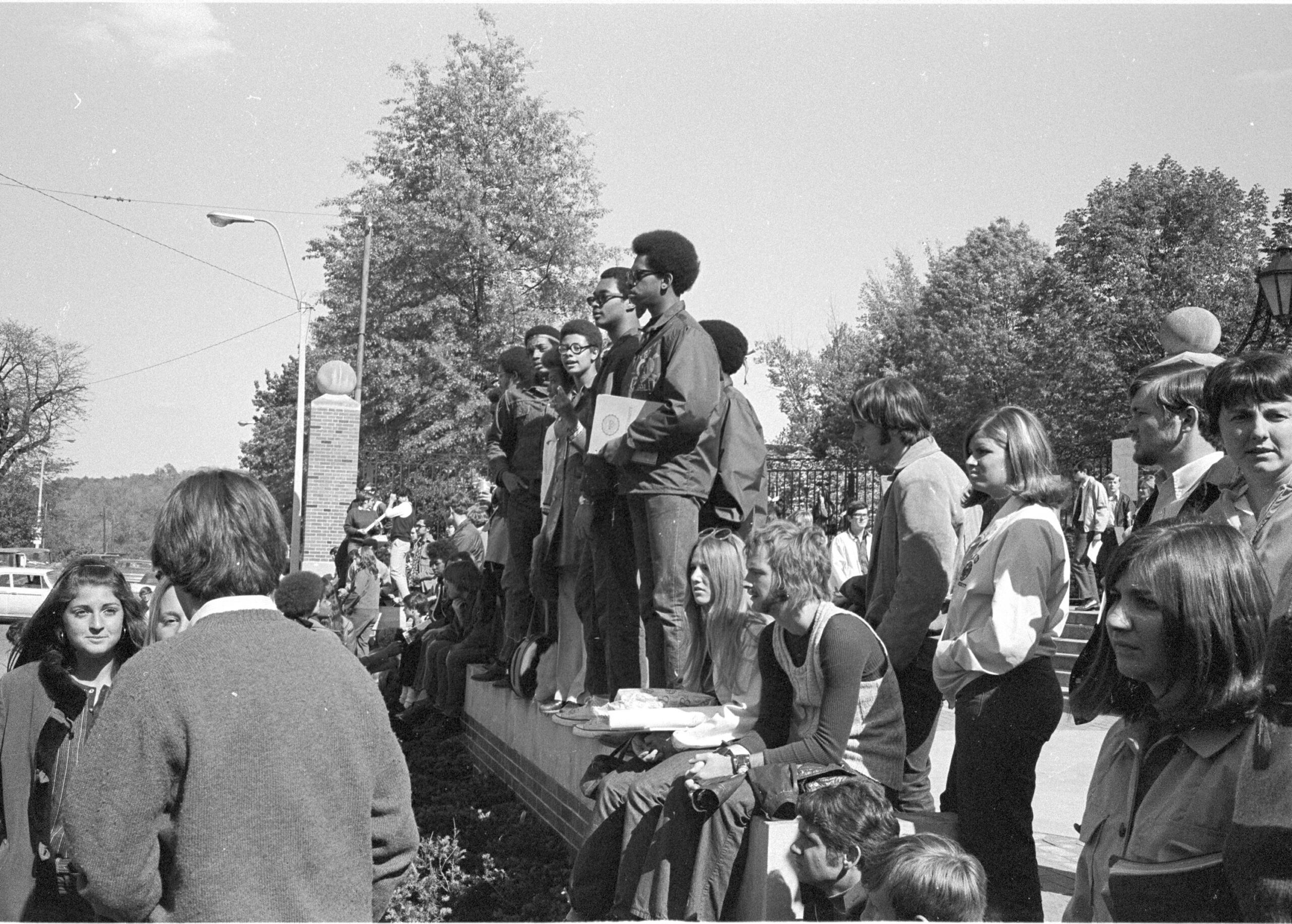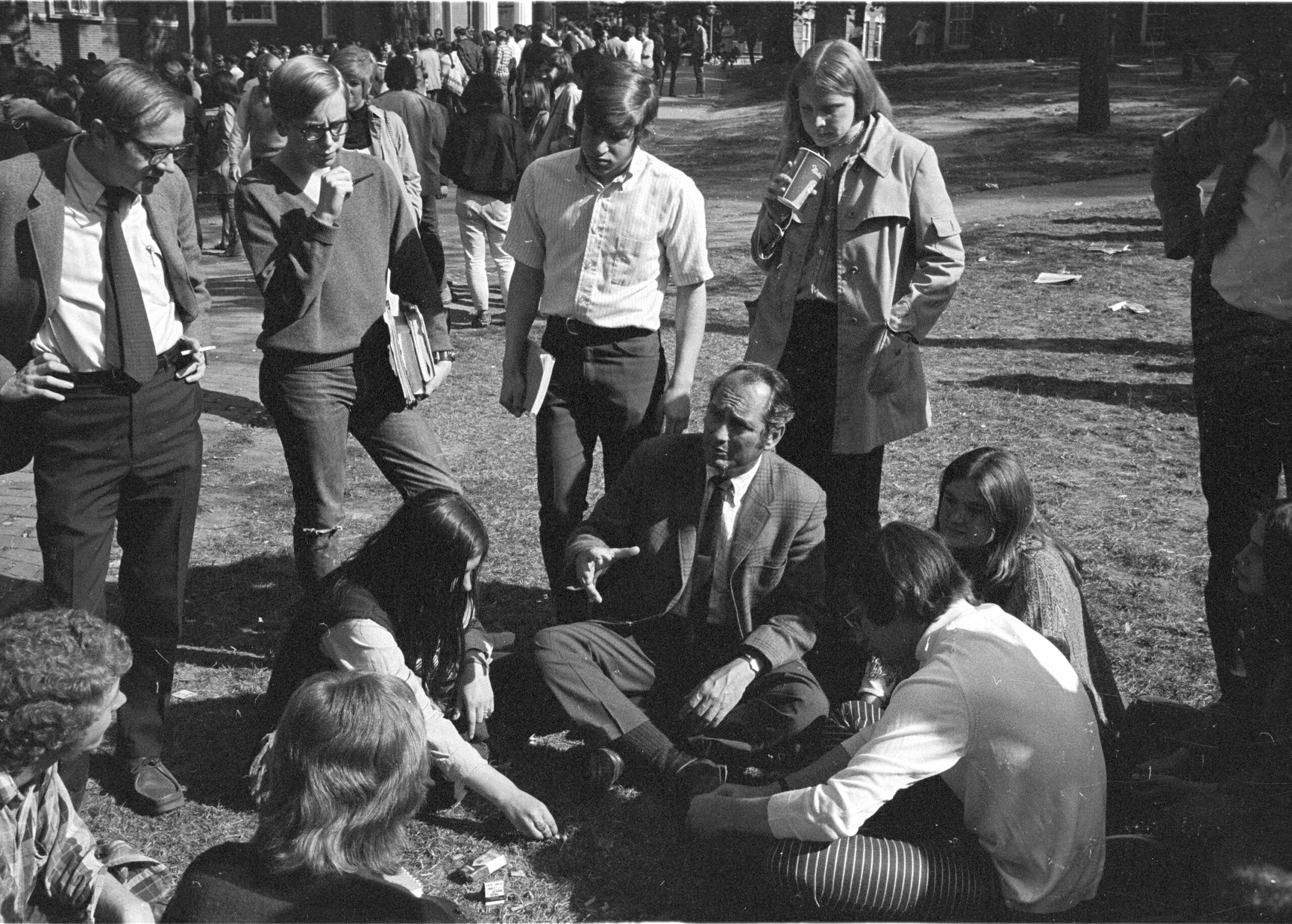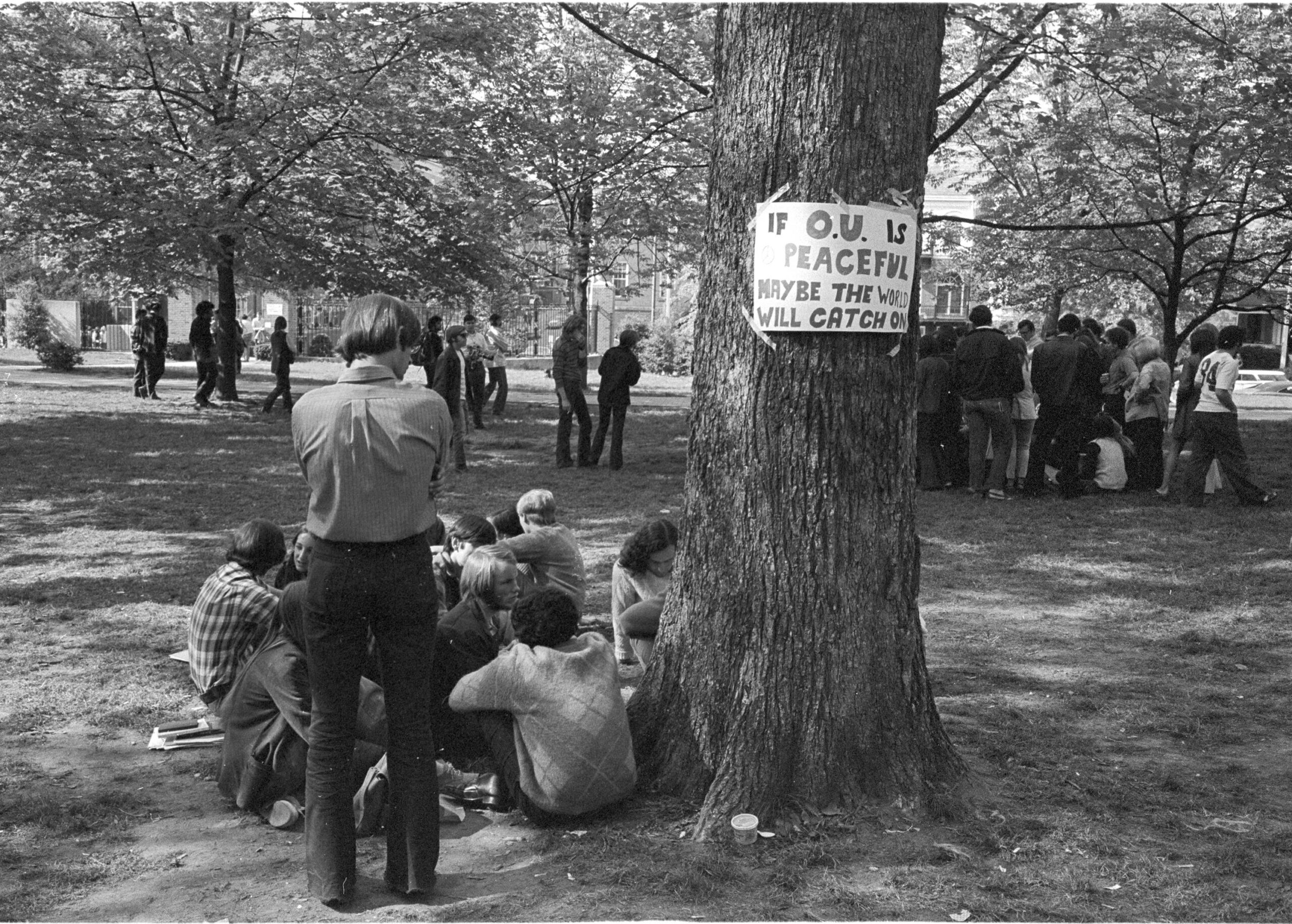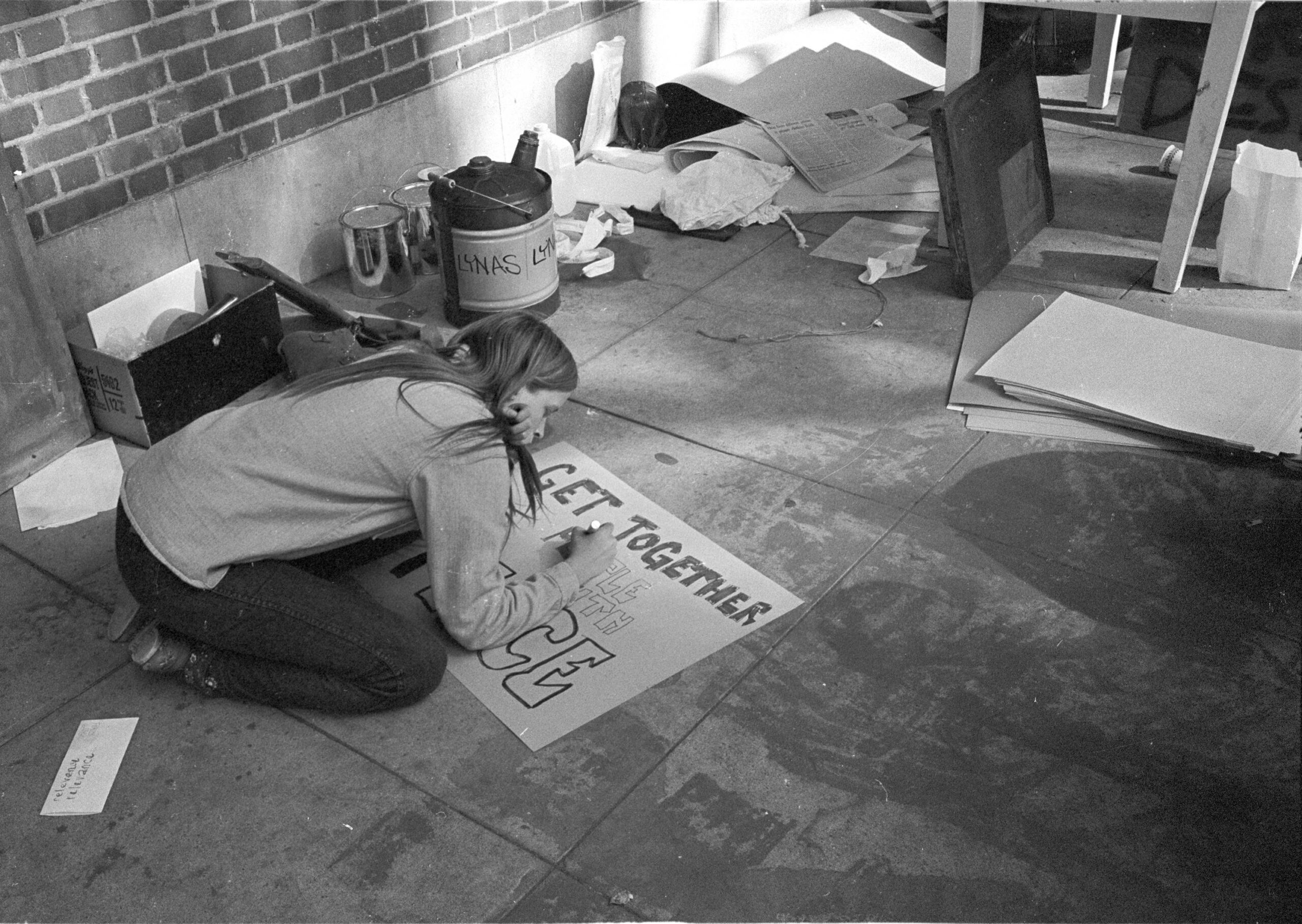By John Higgins, BA ’23, History and Political Science, Student Assistant, Digital Initiatives
Read other posts from this series which recounts the spring 1970 student demonstrations at Ohio University and the administrative response, as documented in campus security reports from the time period.
At approximately 1:45 p.m. on May 4th, university officials organized their control center upon hearing from sources that a 2:00 p.m. mass rally was to be held on the College Green in accordance with many other universities across the state. As the Green began to swell with students, various departments were alerted and doors were secured. At 3:33 p.m. the control center was notified that students wearing red armbands had stated that they were “going to the shit house to have a meeting with Dr. Sowle” (Security report, May 4, 1970). Ohio University quickly dispatched R.O.T.C. students to watch over the airport and Carnegie Hall until the State Highway Patrol could assist. All security officials were put on standby.
After considerable communication with custodians, officials, and officers monitoring buildings across campus, the control center finally received information concerning the next protest which was supposedly planned for 7:00 p.m. that evening. At 4:55 p.m. the Athens Police Department was notified of potential student unrest, and assured that their officers would be on call. Shortly thereafter, security officials received an update that Kent State had closed after events earlier in the day during which the National Guard shot multiple unarmed students, killing four.
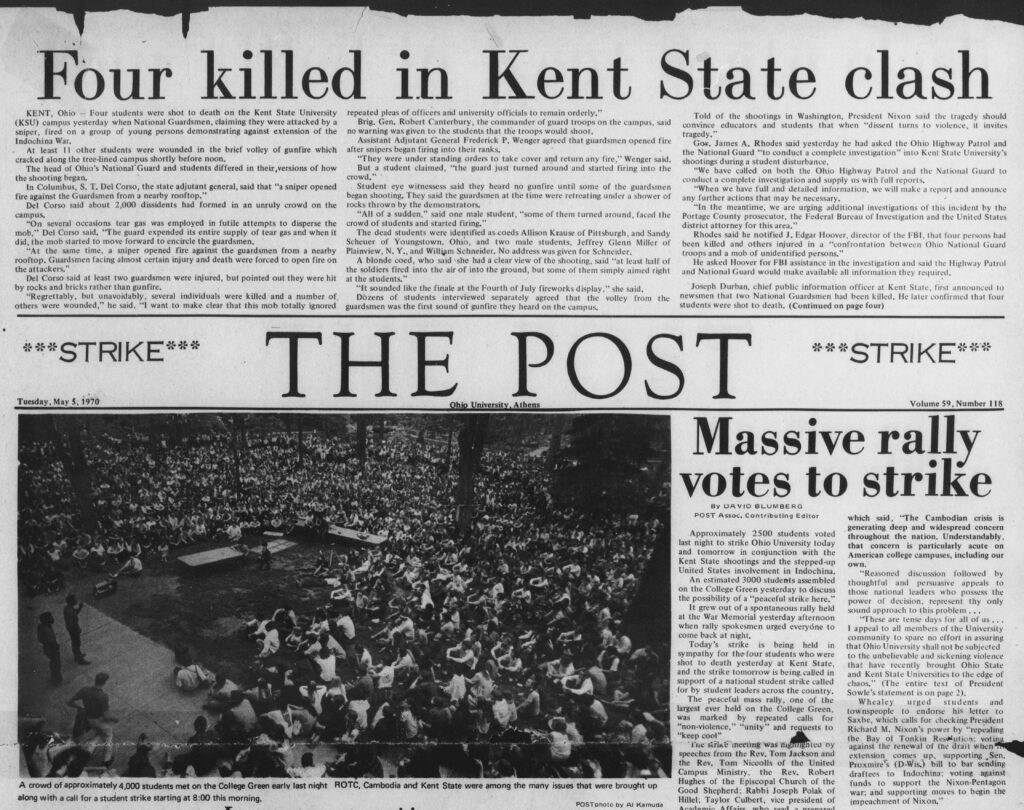
At 6:00 p.m. the control center received information that a vigilante group of athletes, fraternity and R.O.T.C. men were planning on taking things into their own hands at the next student rally. The university had the Heating Plant and Haning Hall secured. Although, it was not until 8:15 p.m. that the College Green saw an influx of over one thousand students wearing various colored armbands and headbands. Yet, after a few hours the crowd subsided and all that remained were around 50 students who decided to spend the night on the College Green. Once again, university officials indicated that they had successfully contained another day of student chaos. However on the morning of May 5th, it was apparent they had misjudged the situation.
At 7:15 a.m. reports of the “nut bunch” gathering on the Green were being monitored as well as the discovery that nearly every blackboard on campus had written on it, “Classes Canceled because of tense situation.” Officials also discovered red handprints that had been graffiti-ed on the College Green Soldiers and Sailors Monument as well as Wilson and McGuffey halls. At 1:15 p.m. around 500 students gathered on the College Green to listen to various speakers talk about the events at Kent State and how other schools had canceled classes. An hour after its start, President Sowle made an appearance at the protest.
After 4 hours of deliberation, the group decided to reconvene with larger numbers at Grover Center at 9:00 p.m. which led to the university quickly sending patrol personnel to watch the building. President Sowle spoke at the rally and with his departure, it was considered over by the control center. At 10:30 p.m. by way of the phone company, the university was given a number for the headquarters of the striking students. The number they received belonged to the United Campus Ministry. Upon dialing, it was answered “APC,” indicating the Athens Peace Committee.
May 6th, 1970 marked the beginning of student tactics that would overwhelm university resources and patience. At 9:56 a.m. the first bomb threat was reported on the 6th floor of Alden Library. Much like all the other bomb threats that would become commonplace over the next nine days, nothing was found. At 12:50 p.m., custodians and security officers discovered “kerosene-soaked paper towels” in the restroom at Super Hall, and firecrackers were reportedly thrown at security officers in a stairwell. This type of resistance only increased in magnitude. At 4:50 p.m. a fire was started outside of Memorial Auditorium and students began to block the street at the Athens Armory which sat in front of the National Guard Post.
Student activity following news of the shootings at Kent State, May 5-7, 1970. See more photos by alumnus Peter L. Goss.
At this time, the control center began to hear rumors that students from other schools were coming to Athens to help with the efforts to cancel classes at the university. At 8:25 p.m. this rumor was proven true as the State Highway Patrol stopped a car headed towards Athens with students from Central State. As the sun fell on the College Green where 1,500 students gathered, university officials desperately attempted to handle two more bomb threats at Copeland and Memorial Auditorium. The rest of the night witnessed a small group of students who stayed on the green around a fire.
May 7th, 1970 would not be much different. At 10:00 a.m., the R.O.T.C. took the preemptive action of moving all their weapons to Columbus in order to keep them out of student hands. The situation was not only straining the university, but also the city of Athens. Most stores remained closed in the evening due to fears of vandalism. At 3:30 p.m. the Mayor of Athens notified university administration that he would not hesitate to summon the National Guard himself if they could not control the situation. By this point, the university had begun to utilize “student marshals” for surveillance and reconnaissance, which consisted of concerned students who wanted to help the university stay open. At 5:45 p.m. a bomb threat was called in at Baker Center and shortly after, the university was bombarded by local police departments offering their help to contain student protesters. These included the Logan and Belpre Police Departments.
Students continued to march around the campus and uptown in groups numbering in the hundreds, but university officials were able to keep everything peaceful. President Sowle was certain that the situation would not escalate as long as the city did not panic. However, at 10:45 p.m. that night as more and more students began to block the intersection of Union and Court Streets, the administration received notice from the security office that a mounted “pepper-fogger” was prepared as well as three squads of city police to resolve the issue. An issue that, for the night of May 7th, resolved itself without the use of police force.
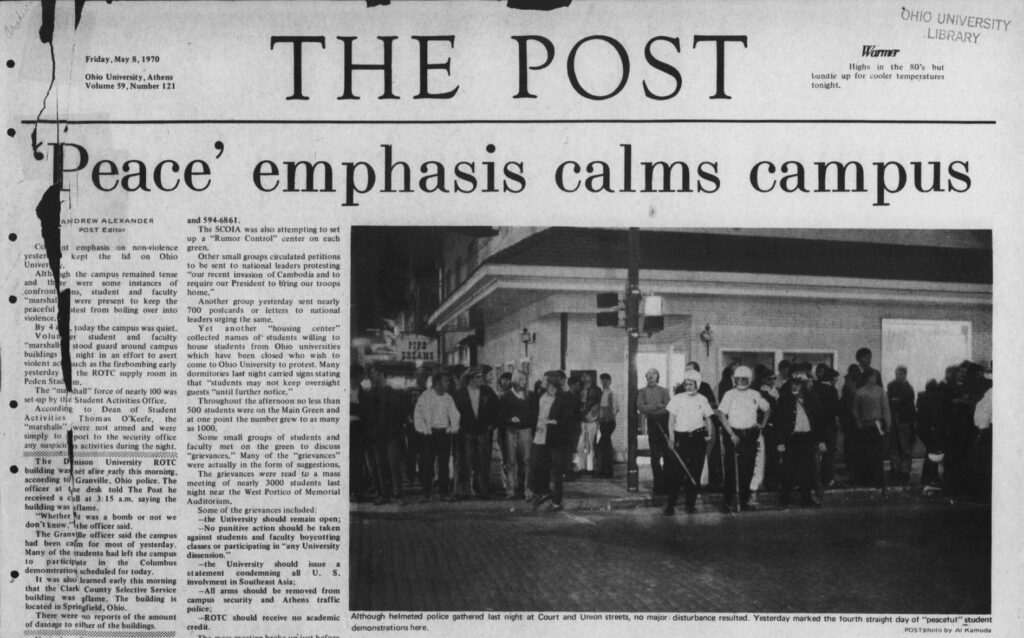
May 10th marked a shift in suspicion for the university as rumors began to pour in that outsiders were present in the city and more were enroute to Ohio University. This information was first reported by a cab driver who indicated that he had transported many riders from the Sunset Motel to campus. At 3:15 a.m. officers reported to the control center that a hand-painted truck with Arizona tags was parked in Lot 25, and wanted confirmation to tow. The rest of the day was devoted to obtaining volunteers to watch the buildings for the coming night. University officials recruited volunteers and student marshalls from fraternities and dormitories to fulfill these duties. At 2:45 p.m. a university official received a call from a student activist requesting the use of Grover Center for a speaking event on Monday, during which they planned on providing their own security. Reports also circulated that this rally had been advertised statewide. University officials attempted to prevent newspapers in Columbus from publicizing it. The last straw for the night came at 11:15 p.m. when two Ohio University students reported talking to Ohio State students who said they were planning on blowing something up on West Green, specifically a bridge.
